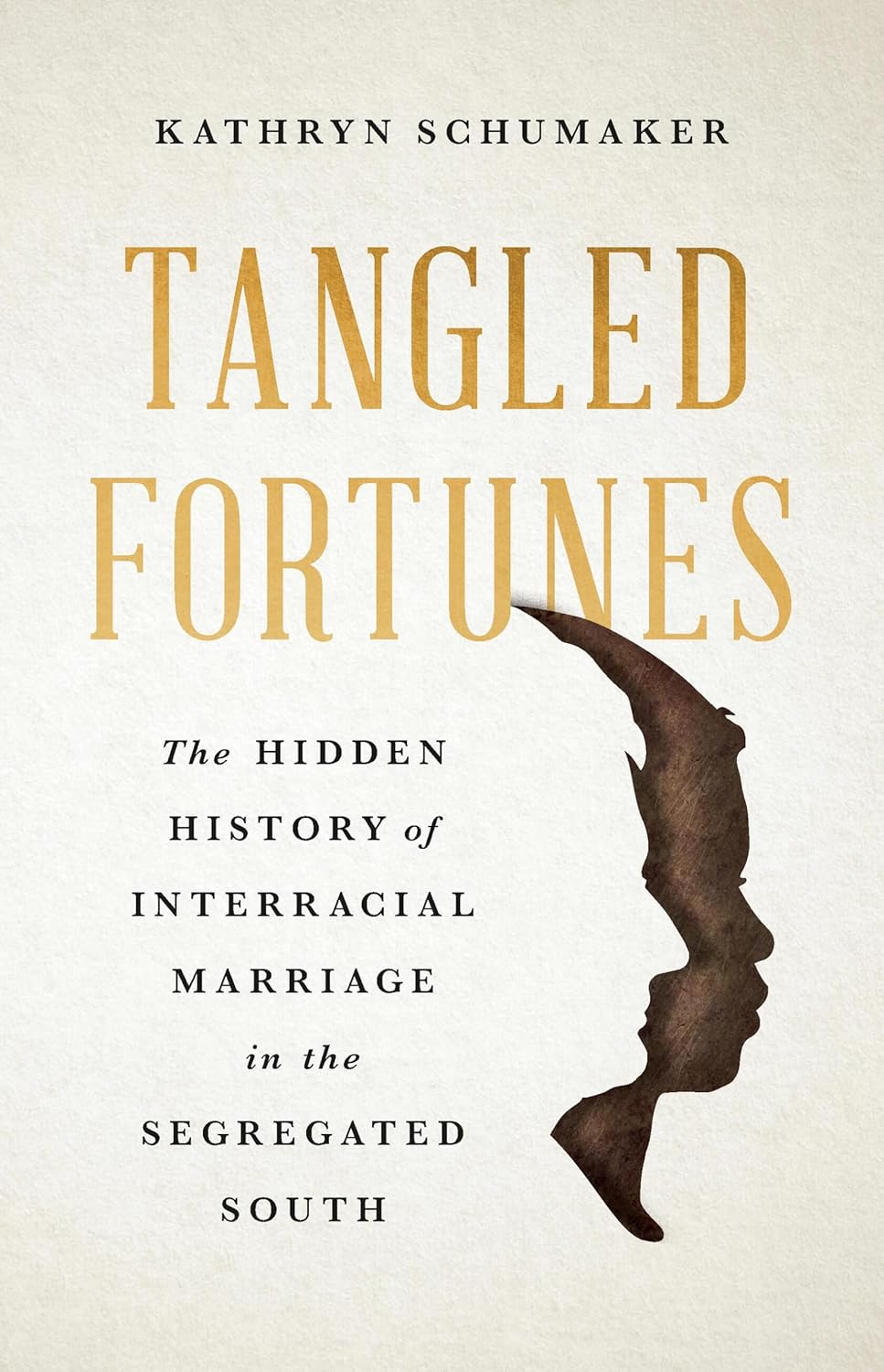Tangled Fortunes: The Hidden History of Interracial Marriage in the Segregated South
- By Kathryn Schumaker
- Basic Books
- 336 pp.
- Reviewed by Paul D. Pearlstein
- February 18, 2025
A dense, sprawling account of mixed-race relationships in America.

Supposedly, in feudal times, the lord of the manor had the right to bed a new bride before her peasant husband in a practice called droit du seigneur (“right of the lord”). The U.S. had its own horrifying version of droit du seigneur: Many slaveowners had forced or consensual sex with their female and occasionally male African slaves. This produced a large but unrecorded number of mixed-race (mulatto) children, some of whom were raised white.
Kathryn Schumaker’s Tangled Fortunes: The Hidden History of Interracial Marriage in the Segregated South examines how several interracial couples in different parts of Mississippi were affected by and dealt with Black Codes, Jim Crow, slavery, the postbellum era, white supremacy, and the efforts to prevent white assets from being acquired by Blacks. The author takes a holistic approach to interracial sexual relations, weaving in local and national politics, the culture of each community, and external players such as the NAACP, the Ku Klux Klan, and the federal government.
Throughout the book, Schumaker proves that one doesn’t need a JD to intelligently discuss the law. Since the beginning of chattel slavery in the Americas, various ordinances prohibited mixed marriage. These laws — with their criminal and civil consequences and the chancery court’s ability to direct the distribution of estate assets — continued long after the Civil War.
Despite 1866 and 1875 civil-rights acts and the 14th Amendment, interracial cohabitation and mixed marriages were still illegal in Mississippi and most Southern states well into the 20th century. Finally, in 1967’s Loving v. Virginia, the U.S. Supreme Court legalized mixed-race marriage across the land.
But before Loving, states treated mixed coupling differently. Often, a Black woman having sex with a white man was considered a mere concubine, with no rights or duties for either party. In a more permanent relationship, a white man might refer to his Black companion as a maid — or he could explain that they merely shared a home. (Short of eyewitness testimony, sexual activity is tough to prove in court.) A famous example of this was the abolitionist Pennsylvania congressman Thaddeus Stevens and his mulatto “housekeeper,” Lydia Smith. And, of course, there was Thomas Jefferson and Sally Hemings. The light-skinned Hemings was the half-sister of his deceased white wife, Martha, and presumably the mother of six of his children, but Jefferson kept her enslaved.
The book analyzes those inconsistent, often confusing legal and societal effects of interracial coupling, or “miscegenation.” The basic questions posed are ones that historians still have no easy answers for: What is marriage (both state-licensed and common law)? Who is a negro (one drop of Black blood, skin color, etc.)? Can the children of an interracial couple be treated as white? What is the status of a paramour of a different race?
Each of the nine chapters contains case studies of individual couples. The presentation seems to emulate a typical law-school casebook, with added commentary reviewing the impact of the political and cultural history of the time. However, in most chapters, the author mixes several cases in a confusing manner. In chapter one alone, there are discussions of more than seven different cases.
In another chapter, the author reviews multiple cases that consider the difficult question of how to identify a negro. The theme reminds this reviewer of Mark Twain’s Pudd’nhead Wilson, a satire in which a slave’s Black baby is intentionally switched with the master’s white one. The master’s biological child then lives the life of a slave, performing hard work and facing the constant threat of being “sold down the river.” Conversely, the slave’s child lives a gloriously shameful and debauched life of luxury and privilege. The swap is only later discovered, and the once “white” child is sold to help pay the failing estate’s creditors. Could some of the mixed-race progeny in Tangled Fortunes have been in similar situations?
The endless machinations that the courts went through during Reconstruction (and beyond) to try to keep wealth away from former slaves and generations of their offspring are eye-opening and gross. Racist politicians like Theodore G. Bilbo, a onetime governor of and U.S. senator from Mississippi, proudly advertised their bigotry and became both heroes and pollutants in the South. (Covering such polarizing figures will surely make this book a target for censorship from the anti-woke crowd.)
Tangled Fortunes has been carefully researched and features an excellent prologue. Unfortunately, Schumaker seems to have fallen in love with her research and could have used a bolder editor with sharper scissors. The result is not quite a textbook nor a popular history; too much data and too many legal discussions stymie the narrative flow. Nonetheless, persevering readers will be rewarded by the ample and interesting details tangled up in these long-ago fortunes.
Paul D. Pearlstein is a retired lawyer who grew up in segregated Virginia and began work in a segregated District of Columbia.
